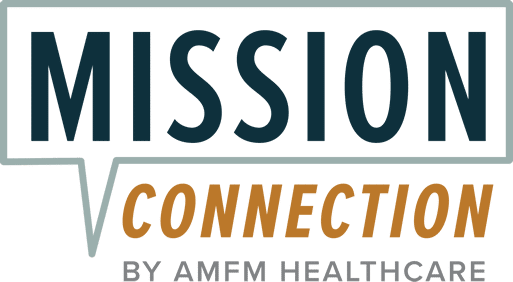Cognitive Behavioral Therapy Techniques You Can Try at Home

Are you struggling to control your worries, everyday stress, or low mood? If so, know that you’re not alone. Did you know that you don’t need to see a therapist to start feeling better?
With self-help, you can start gaining control over your symptoms. There’s a type of therapy called Cognitive Behavioural Therapy (CBT) that is one of the most effective and researched approaches for positively changing your mental health.1 It has loads of techniques that you can practice on your own at home that can bring immense benefits.
On this page, we’ll dive into some practical cognitive behavioral therapy techniques for anxiety, depression, stress, and emotional regulation. Whether you’re new to CBT or just looking to step up your self-help routine, we’ll give you plenty of exercises and tips to help you regain control over your thoughts, feelings, and actions.
You’ll find out:
- How CBT for mental health works
- Step-by-step techniques you can begin using right away
- How to use CBT for stress, anxiety, depression, and emotional regulation
- Tips for practicing CBT effectively at home
Are you ready to discover new ways to help yourself on your mental health journey? Let’s get started.

What Is CBT?
Connection Between Thoughts, Feelings, and Behaviors
Thoughts: These are your interpretations of a situation. For example, if you wave to a friend across the street but they don’t wave back, you might think “How rude!”, or “Oh no, have I done something to upset them?”- Feelings: Your emotions, such as happy, sad, angry, or scared.
- Behaviors: The actions you take in response to a situation, such as saying or doing something (or choosing not to say or do something).
Let’s look at how thoughts can affect your feelings, and behaviors by using an example. Imagine you wave to a friend across the street and they don’t wave back. You could then have any number of thoughts about this, which would lead to different feelings and actions:
Situation 1:
- Thought: “They didn’t wave back – how rude.”
- Feeling: Angry.
- Behavior: Send them a message about how rude they were.
- Thought: “Have I done something wrong?”
- Feeling: Worried and sad.
- Behavior: Avoid them, just in case.
- Thought: “Hmmm, they didn’t wave back. I guess they didn’t see me.”
- Feeling: Neutral.
- Behavior: Carry on as normal.
As you can see, your thoughts, feelings, and behaviors are all strongly linked. CBT helps you to recognize and change negative or unhelpful thoughts so that you can change your feelings and actions.
How to Use CBT At Home
A great thing about CBT for self-improvement is that the tools and techniques can be used by yourself independently of a therapist. You might be wondering how to practice CBT at home. Well, here’s a basic step-by-step guide to get you started.
1. Identify Negative Thought Patterns
The first step is to become aware of the instant thoughts that pop into your head whenever you feel stressed, anxious, or low. You may not really notice them at the moment, but they have a big impact on how you feel and act afterward.
Writing these thoughts down can help you to notice them when they crop up, and see how often they occur when you do feel stressed. Some examples of automatic thoughts might be “I never do anything right,” “Things always go wrong for me”, or “Nobody likes me.”
2. Challenge Your Thinking
Once you’ve recognized these negative thoughts, you can start asking yourself if they are fact or fiction. Look for evidence that it’s true and that it’s false. Take, for example, the thought “Things always go wrong for me.” Can you think of a way that things have gone right for you, even once? If you can, that’s great! It means that things can’t always go wrong for you, so that thought isn’t fact, it’s fiction.
3. Replace With a More Balanced Thought
To carry on with our example, the thought “things always go wrong for me” is inaccurate, so the more balanced thought to replace it with could be “Things sometimes go wrong for me, but they also go right a lot of the time”. By reframing the original thought more realistically, you begin focussing on the positives and appreciating the way that things go well for you usually, and you can reduce your stress levels.6
Cognitive Behavioral Therapy Exercises
There are a whole host of self-help CBT techniques for you to try at your leisure, and we’ve gathered our top five to share with you.
Journaling
Journaling can be a great way to get your thoughts out of your head and onto paper. It gives you an emotional release, as well as space and time to reflect on what you were thinking. If you make writing a habit, you can start to notice patterns in what you think and connections with how you feel. Research shows that journaling can help people feel less depressed, as well as improve mood and overall well-being.7
Cognitive Restructuring
This term is used to mean identifying the negative thought patterns you have, challenging them, and replacing them with new, balanced thoughts. You can do this by making a thoughts record. Specifically, you can write down the thoughts you had, the time of day, and the situation you were in when it happened. Then you can start to examine the thought, write down evidence of whether it’s fact or fiction, and write down a new, realistic, kind thought to replace it.
The more you do this, the more it can help. If you’ve ever learned a musical instrument, you probably remember how frustrating it was to pick up something new, but with practice, it became much easier and more natural. It’s the same with anything – practice makes progress.
Progressive Muscle Relaxation
Relaxed Breathing
Breathing in a mindful way can help you relax, feel more calm, and less distressed which is great for getting yourself into the right frame of mind for any problem-solving you need to do.9 There are videos and audio guides available online, but one example is square breathing. This is where you’re breathing in and out for the same length of time.
For example, breathe in for a count of four, hold for a count of four, breathe out for a count of four, hold for a count of four, and repeat.
Mindfulness Meditation
Meditation is a technique that uses mental or physical exercises to help you improve your focus and self-awareness so that you can be in a mentally clear, emotionally calm, and stable state.
Meditation can involve breathing in mindful ways, repeating mantras, or walking meditations. It’s something that can be added to your daily routine, and have great benefits for your mind. Research shows that meditation creates positive changes to the structure of the brain, it calms your body and reduces stress hormones.10,11
CBT for Specific Issues
CBT can be used to help a wide range of mental health issues. Here are some examples of how you can use CBT at home for some common conditions:
- CBT techniques for anxiety: You could use grounding techniques, breathing exercises, or set aside specific times for worrying to help you check over your thoughts.
- CBT for depression at home: Meditation and journaling are great strategies to help you develop self-compassion and kindness toward yourself, and to begin to notice negative thought patterns.
- CBT for stress management: Breathing exercises and muscle relaxation can help calm the mind and relieve physical symptoms of stress, such as tense muscles.
- CBT for emotional regulation: Cognitive restructuring and relaxation exercises, such as mindful breathing, are helpful for reframing negative thoughts and helping you to stay grounded when you experience intense feelings.
Practicing CBT techniques at home can help you manage your emotions, thoughts, and actions better, leading to a more balanced and healthier mindset.
Cognitive Behavioral Therapy Tips
To get the most out of your home CBT practice, remember to keep these tips in mind:
- Set goals you can achieve: Start small, don’t try to change everything at once. Focus on one area at a time, like managing your stress with different techniques, and build up from there.
- Keep an eye on your progress: Use a journal, a thought record, or a notes app on your phone to keep track of your progress over time. Noticing how your mood, thoughts, or actions change with the techniques you use can be a great motivator.
- Focus on consistency: Try to practice a technique every day, even if it’s just two minutes of breathing exercises. Make it regular, make it a habit.
- Treat yourself with kindness and patience: Change takes time and progress isn’t always a straight line. Don’t expect to see immediate results from one meditation session, for example. And remember that we all have off days, so don’t beat yourself up if something doesn’t seem to ‘click’. Just try again tomorrow.
- Know when to seek professional help: If you feel stuck or overwhelmed by it all, it might be worth reaching out for professional help. Self-help CBT is usually a good choice if you have mild to moderate symptoms or are generally able to function well. However, if you are experiencing more severe symptoms, then one-to-one treatment with a professional will probably be a better option.12 You’ll have the benefit of a therapist who can guide you through practices and help pinpoint what areas may be best to focus on, as well as be able to go into any concerns or issues in-depth.
Ready to Start Your Journey With CBT Therapy?
While self-help cognitive behavioral therapy (CBT) techniques can be useful for managing your stress or depression, sometimes you might want some extra guidance. Professional support is always available and is recommended especially if you are struggling with deeper issues or challenges that leave you feeling overwhelmed. If you feel like this, reach out to our team at Mission Connection.
We can offer you professional compassionate support tailor-made for your individual needs. Our care is what makes us unique, and we offer a range of treatments to support you in the best way possible, including:
- Short-term inpatient stays
- Partial hospitalization programs
- Intensive outpatient programs
- Outpatient services such as CBT are available both in-person and online.
Working out how to pay for the cost of mental health treatment can be a worry for a lot of people. We offer a wide range of payment options so that you can always access the support that you need and deserve.
If you’re ready to start on the road to recovery, contact us today at 866-646-8289 or get started here to find out how we can support you to become the best version of yourself.

References
- American Psychological Association. (2017, July 31). What is cognitive behavioral therapy? https://www.apa.org/ptsd-guideline/patients-and-families/cognitive-behavioral
- Bogucki, O. E., Craner, J. R., Berg, S. L., Miller, S. J., Wolsey, M. K., Smyth, K. T., Sedivy, S. J., Mack, J. D., Johnson, M. W., Burke, L. M., Williams, M. W., Katzelnick, D. J., & Sawchuk, C. N. (2021). Cognitive behavioral therapy for depressive disorders: Outcomes from a multi-state, multi-site primary care practice. Journal of Affective Disorders, 294, 745–752. https://doi.org/10.1016/j.jad.2021.07.061
- Curtiss, J. E., Levine, D. S., Ander, I., & Baker, A. W. (2021). Cognitive-behavioral treatments for anxiety and stress-related disorders. FOCUS: The Journal of Lifelong Learning in Psychiatry, 19(2), 184–189. https://doi.org/10.1176/appi.focus.20200045
- Valdivieso-Jiménez, G. (2021). Eficacia de la Terapia Cognitiva Conductual Para el Trastorno Bipolar: una Revisión Sistemática. Revista Colombiana de Psiquiatría, 52(3), 213–224. https://doi.org/10.1016/j.rcp.2021.05.006
- Therapist Aid. (2021, May 26). CBT triangle. https://www.therapistaid.com/therapy-worksheet/cbt-triangle
- Calm Editorial Team. (2024, August 27). Reframing negative thoughts: How to challenge negative thinking — Calm Blog. Calm Blog. https://www.calm.com/blog/reframing-negative-thoughts
- Baikie, K. A., & Wilhelm, K. (2005b). Emotional and physical health benefits of expressive writing. Advances in Psychiatric Treatment, 11(5), 338–346. https://doi.org/10.1192/apt.11.5.338
- Sutton, J. (2024, October 23). Progressive muscle relaxation: 10 scripts for effective PMR. PositivePsychology.com. https://positivepsychology.com/progressive-muscle-relaxation-pmr/
- Ng, C. G., Lai, K. T., Tan, S. B., Sulaiman, A. H., & Zainal, N. Z. (2016). The effect of 5 minutes of mindful breathing to the perception of distress and physiological responses in palliative care cancer patients: A randomized controlled study. Journal of Palliative Medicine, 19(9), 917–924. https://doi.org/10.1089/jpm.2016.0046
- Annells, S., Kho, K., & Bridge, P. (2015). Meditate don’t medicate: How medical imaging evidence supports the role of meditation in the treatment of depression. Radiography, 22(1), e54–e58. https://doi.org/10.1016/j.radi.2015.08.002
- Rogerson, O., Wilding, S., Prudenzi, A., & O’Connor, D. B. (2023). Effectiveness of stress management interventions to change cortisol levels: A systematic review and meta-analysis. Psychoneuroendocrinology, 159, 106415. https://doi.org/10.1016/j.psyneuen.2023.106415
- National Alliance on Mental Illness. (2024, February 7). Discovering new options: Self-help cognitive behavioral therapy. https://www.nami.org/book-review/discovering-new-options-self-help-cognitive-behavioral-therapy/
